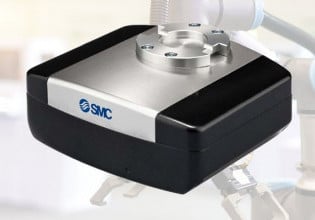Plastic Waste is Filling Landfills and Oceans - Is AI the Answer?
AMP Robotics is developing a first-of-its-kind artificial intelligence-based automation solution for identifying and processing film and flexible packaging in material recovery facilities.
The Denver-based company, AMP Robotics Corp. (AMP), is a producer of advanced robotics systems for reclaiming raw, recyclable materials for the global supply chain. The “AMP” in the company name stands for Autonomous Manipulation and Perception. As the name implies, AMP applies artificial intelligence (AI) and vision systems to automate the sorting, identification, and processing of waste streams, including recyclable waste materials in materials recovery facilities (MRFs).
On October 19, 2022, AMP announced that it is developing an AI-driven automation solution for identifying and recovering film and flexible packaging in MRFs. The pre-release of AMP’s Vortex solution has begun with the company and its partners gearing up for deployment and full production release by 2023.

86% of plastice waste in the US ends up in the landfill, calling for a greater need for recycling efforts. Image use courtesy of AMP Robotics
Too Little Recycling
In a study released this year by the U.S. Department of Energy (DOE), a reported 44 million metric tons of plastic waste was discarded in 2019 in the U.S. A mere 5% of this waste was recycled, 9% was combusted for electricity generation, and a staggering 86% was sent to landfill. A report from The Last Beach Clean Up and Beyond Plastics documented similar results, with a recycling rate of 5 to 6% for post-consumer plastic waste.
Not only are these shocking statistics that conjure up scenes of environmental devastation—such as sea birds choking on plastic waste or turtles caught in plastic beer can rings—these statistics obviate the need for a more rigorous and efficient recycling infrastructure.
According to AMP, MRFs face several issues associated with film and flexible packaging identification and processing. Around 2 to 3% of film in MRF streams can become jammed in equipment and is not easy to remove. This can lead to unwanted downtime and disturbs the recovery of recyclable materials. Film and flexible packaging can also contaminate other lines in MRFs, including fiber lines, which reduces fiber bale purity. This can incur revenue loss and greater costs for additional post-processing downstream.

AMP’s Vortex solution will be used to help identify and recover film and flexible packaging in MRFs. Image used courtesy of AMP Robotics
AMP Vortex - A Recycling Solution?
AMP is working on filling the gap in infrastructure required for the identification and sorting of film and flexible packaging. AMP’s Vortex solution is designed to target film contamination and handle quality control on fiber lines. Once identified and sorted, film and flexible packaging will be balled and sold.
The reprocessing of film and flexible materials into raw materials is known to be complex and costly, which is why end markets appear to be few. With AMP’s Vortex solution, the company is aiming to help curb plastic waste entering landfills while encouraging the reuse of films and flexibles and developing end markets.
Aligning with new laws and sustainability goals, big brands are taking steps to incorporate more recycled materials in their packaging, and post-consumer recycled resin is becoming more prevalent in plastic packaging and products.
Artificial Intelligence and Image Processing
Although AMP reveals no specific details of the inner working of its AI-based Vortex solution, we can gain insights into the workings of such technology through AMP’s other products.
AMP’s Neuron is its AI-driven platform which uses computer vision for the identification of specific recyclable materials in waste streams. The platform can distinguish between different types of paper, metal containers, different forms of plastic, and more.

AMP Neuron recognizes over 50 billion objects during the processing of recyclable materials each year. Image used courtesy of AMP Robotics
AI is built upon the integration of complex algorithms that enable computers to learn skills through experience and repeating tasks in real-world conditions. AMP Neuron uses AI and image processing (involving the digitization of pixels into data) to classify and characterize different recyclables. Machine learning (ML) also enables Neuron to improve its recyclable material classification and characterization capabilities to, in turn, enhance performance.
"AI-Powered Automation"
Just this Wednesday, AMP Robotics raised over $90 million in Series C Financing, meaning they now have even greater capital to implement their AI-powered solutions in waste management.






